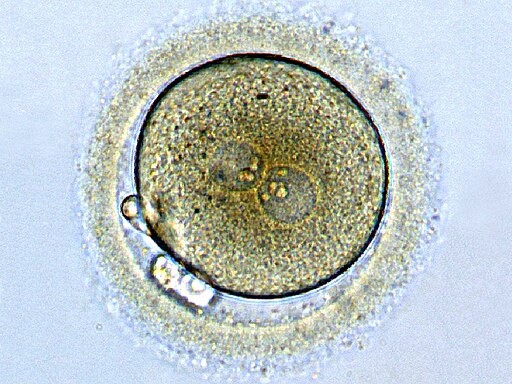
Viruses often have a bad reputation because they are responsible for outbreaks such as Ebola, HIV/AIDS, SARS, and COVID-19, but it turns out that these infectious agents are actually vital components in the evolution of animals, including humans.
A Smooth Transition
Every human begins as a single cell. The very minute fertilized egg, called zygote, grows into an individual made of around 30 trillion cells. This is made possible by cell division which allows the zygote to develop into a collection of different cell types that are organized into tissues and organs.
The first single cell is totipotent, which means that it has the ability to produce an independent organism. When this cell divides, the two resulting cells are also totipotent, but a significant change happens in the next stage when the oocyte goes from having two to four cells.
In the next phase of cell division, the four cells are no longer totipotent, but are pluripotent. They can differentiate into cells of any specialized tissue of the body, but not into an independent organism.
Remnants From 'Junk' DNA
A surprising actor in this fundamental stage of human development has been discovered by a team of scientists from the National Cancer Research Center (CNIO) in Madrid, Spain. In a study on mouse embryos, the researchers discovered that the relics of viruses which infected primitive organisms hundreds of millions of years ago, are embedded in the animal's DNA.
The genetic material of the endogenous retrovirus MERVL was integrated into the genomes of organisms which may have driven the Cambrian explosion. This is the period in history when the seas in the planet underwent a biodiversity boom 500 million years ago. Genetic sequences of these viruses over the past decade reveal that their genetic material makes up over 8% of the human genome.
According to study lead author Sergio de la Rosa, these viral remnants used to be considered as 'junk DNA' that was unusable or even harmful. It was also intuitively thought that having viruses in the genome could not be good. However, scientists have started to realize that these retroviruses actually have important functions like the regulation of other genes.
In the study "Endogenous retroviruses shape pluripotency specification in mouse embryos", de la Rosa and his colleagues found that endogenous retrovirus sets the pace in embryo development. They take action during the stage of transition from totipotency to pluripotency.
This action mechanism involves URI, a type of gene associated with various types of cancer, like ovarian and liver cancer. For more than two decades, CNIO leader Nabil Djouder has been studying this gene in depth. His team discovered that if URI is deleted in laboratory animals, embryos will not have a chance to develop. As de la Rosa and his team tried to find out why, they discovered its connection to the MERVL retrovirus.
The findings revealed that one of the functions of URI is to enable the action of molecules needed in achieving pluripotency. If URI or the pluripotency factors do not act, the cell will remain in a state of totipotency. It turns out that an endogenous retrovirus protein is the one responsible for modulating the action of URI.
RELATED ARTICLE : Research Discovers New Insights on Gastrulation in Early Human Embryonic Development
Check out more news and information on Embryo in Science Times.
© 2025 ScienceTimes.com All rights reserved. Do not reproduce without permission. The window to the world of Science Times.










